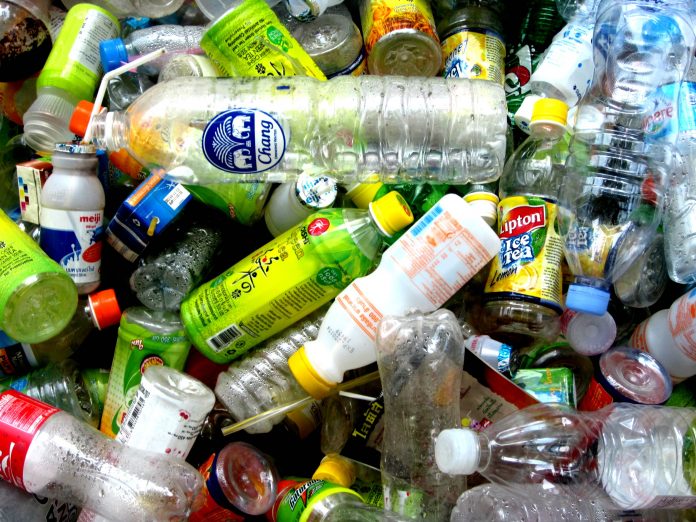The scientists who re-engineered the plastic-eating enzyme, PETase, have now created an enzyme partnership which can digest plastic up to six times faster
A second plastic-eating enzyme, found in the same rubbish dwelling bacterium that lives on a diet of plastic bottles, has been combined with PETase to speed up the breakdown of plastic and help combat our plastic pollution problem.
The problem
Plastic pollution is one of the most pressing environmental issues. The world is struggling to deal with the rapidly increasing production of disposable plastic products.
Because of the convenience plastic brings, it has led to a disastrous plastic pollution problem associated with the throw-away culture seen all over the world. Today, single-use plastics account for 40% of the plastic produced every year. Many of these products only get used for minutes to hours, yet they may exist in the environment for thousands of years.
Although recycling is an option in many western countries, there are significant challenges that face the recycling industry. Over the past few years, it’s become increasingly clear that we can’t recycle ourselves out of the ongoing plastic problem.
Unlike glass and aluminium, plastic cannot currently be infinitely recycled, and many recycling systems are confusing for users meaning recyclable and non-recyclable plastics end up in the same box.
A plastic-eating solution
PETase breaks down polyethylene terephthalate (PET) back into its building blocks, which creates an opportunity to recycle plastic infinitely.
PET is often used to make single-use drinks bottles, clothing and carpets and it takes hundreds of years to break down in the environment, but PETase can shorten this time to days.
The plastic-eating enzyme alone is not yet fast enough to make the process commercially viable to handle the tons of discarded PET bottles littering the planet.
The initial discovery set up the prospect of a revolution in plastic recycling, creating a potential low-energy solution to tackle plastic waste. The team engineered the natural PETase enzyme in the laboratory to be around 20% faster at breaking down PET.
The study, published in Proceedings of the National Academy of Sciences of the United States of America, combined PETase and its ‘partner’, a second enzyme called MHETase, to generate much bigger improvements, doubling the speed of PET breakdown. The team also engineered a connection between the two enzymes to create a ‘super-enzyme’, which increased this activity by a further three times.
The team was co-led by the scientists who engineered PETase, Professor John McGeehan, Director of the Centre for Enzyme Innovation (CEI) at the University of Portsmouth, and Dr Gregg Beckham, Senior Research Fellow at the National Renewable Energy Laboratory (NREL) in the US.
Professor McGeehan said: “Gregg and I were chatting about how PETase attacks the surface of the plastics and MHETase chops things up further, so it seemed natural to see if we could use them together, mimicking what happens in nature.
“Our first experiments showed that they did indeed work better together, so we decided to try to physically link them, like two Pac-men joined by a piece of string.
“It took a great deal of work on both sides of the Atlantic, but it was worth the effort – we were delighted to see that our new chimeric enzyme is up to three times faster than the naturally evolved separate enzymes, opening new avenues for further improvements.”











